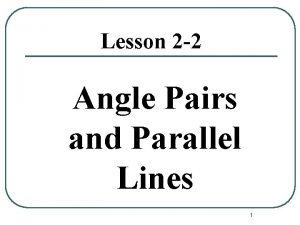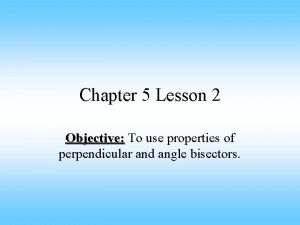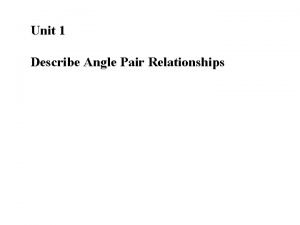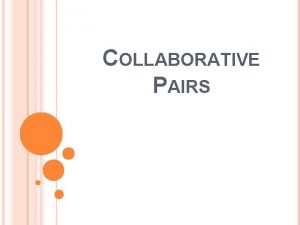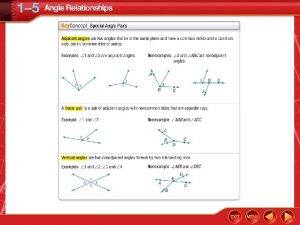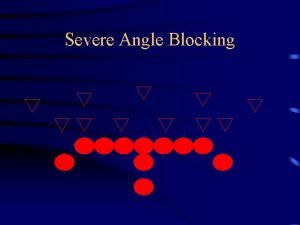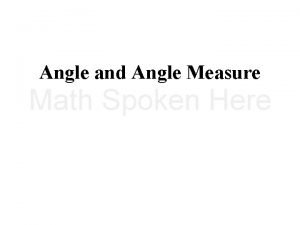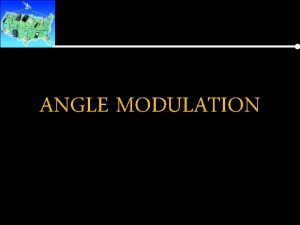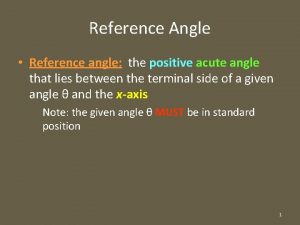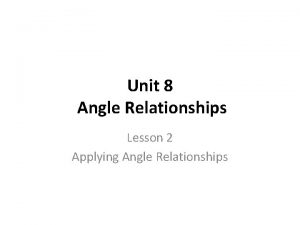Exploring Angle Pairs Unit 1 Lesson 5 Exploring











- Slides: 11

Exploring Angle Pairs Unit 1 Lesson 5

Exploring Angle Pairs Students will be able to: • identify special angle pairs and use their relationships to find angle measures Key Vocabulary adjacent angles complementary angles linear pair vertical angles supplementary angles angle bisector

Exploring Angle Pairs Special angle pairs can help you identify geometric relationships. You can use these angle pairs to find angle measures.

Exploring Angle Pairs Problem 1: Use the diagram at the right. Is the statement true? Explain a. b. c. <BFD and <CFD are adjacent angles. <AFB and <EFD are vertical angles <AFE and <BFC are complementary.

Exploring Angle Pairs Problem 2: Use the diagram at the right. Is the statement true? Explain a. <AFE and <CFD are vertical angles. b. <BFC and <DFE are supplementary. c. <BFD and <AFB are adjacent angles.

Exploring Angle Pairs Problem 3: What can you conclude from the information in the diagram?

Exploring Angle Pairs Problem 4: Can you make each conclusion from the information in the diagram? Explain. a. b. Segment TW is congruent to Segment WV Segment PW is congruent to Segment WQ c. <TWQ is a right angle d. Segment TV bisects Segment PQ

Exploring Angle Pairs A linear pair is a pair of adjacent angles whose noncommon sides are opposite rays. The angles of a linear pair form a straight angle. *If two angles form a linear pair, then they are supplementary.

Exploring Angle Pairs Problem 5: <KPL and <JPL are a linear pair, m<KPL = 2 x + 24, and m<JPL = 4 x + 36. What are the measures of <KPL and <JPL?

Exploring Angle Pairs An angle bisector is a ray that divides an angle into two congruent angles. Its endpoint is a the angle vertex. Within the ray, a segment with the same endpoint is also an angle bisector. The ray or segment bisects the angle. In the diagram, Ray AY is the angle bisector of <XAZ, so m<XAY = m<YAZ.

Exploring Angle Pairs Problem 6: Ray AC bisects <DAB. If m<DAC = 58, what is m<DAB?
 Special angle relationships
Special angle relationships Unit 2 lesson 5 exploring angles
Unit 2 lesson 5 exploring angles 1-5 practice exploring angle pairs
1-5 practice exploring angle pairs Corresponding angles
Corresponding angles 1-5 exploring angle pairs
1-5 exploring angle pairs Name a pair of adjacent supplementary angles
Name a pair of adjacent supplementary angles Linear pair of angles definition
Linear pair of angles definition Shapes of compounds
Shapes of compounds Unit 7 lesson 2 perpendicular and angle bisectors
Unit 7 lesson 2 perpendicular and angle bisectors Unit 1 homework 6 angle relationships
Unit 1 homework 6 angle relationships How to label hyp opp adj
How to label hyp opp adj Lesson 1 exploring conic sections
Lesson 1 exploring conic sections



